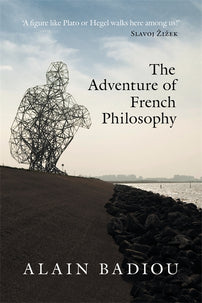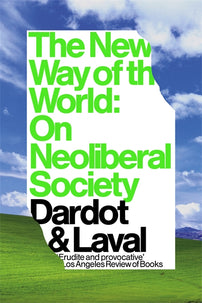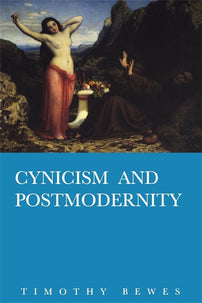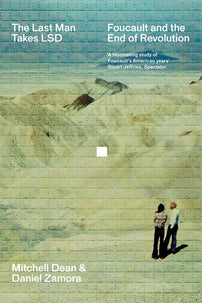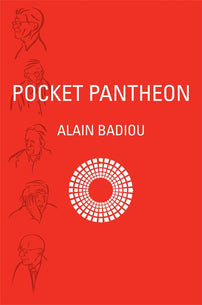Toward a Theory of Twenty-First-Century Charlatanism
Eric-John Russell on charlatans, swindlers, frauds, and Jaime Semprun’s A Gallery of Recuperation.
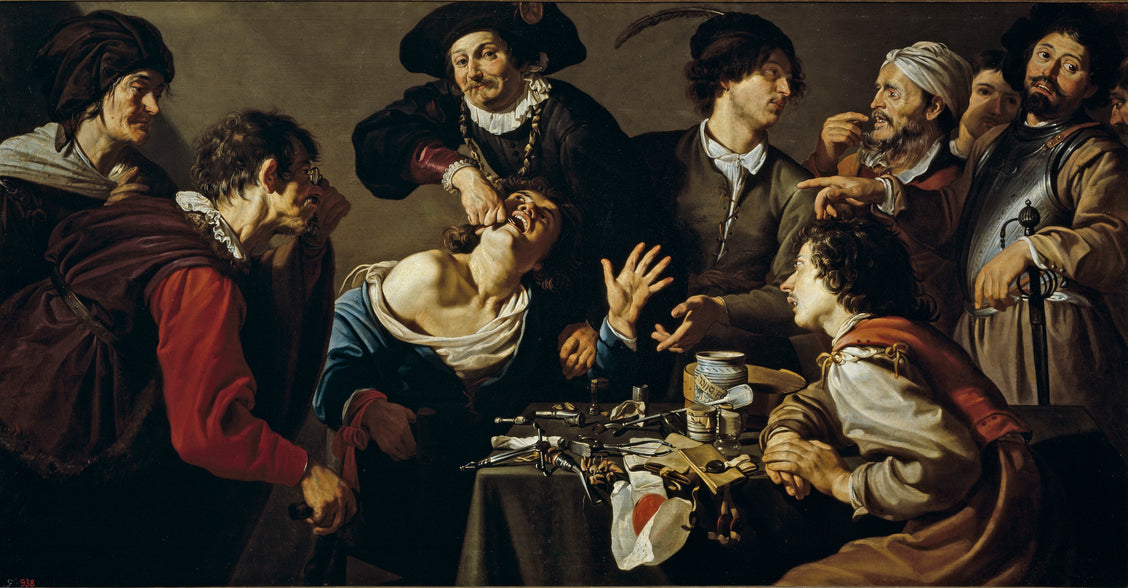
I ceased in the year 1764 to believe that one can convince one’s opponents with arguments printed in books. It is not to do that, therefore, that I have taken up my pen, but merely so as to annoy them, and to bestow strength and courage on those on our side, and to make it known to the others that they have not convinced us.
— Georg Christoph Lichtenberg
Everyone today longs for recuperation. In an era of plague and pandemic, the appeal for recovery and restoration—of antibodies no less than supply chains—carries with it the return of more than what it says. Recuperation is always the injunction to get back to work. At the same time, there is no shortage of words today whose resonance rings hollow, whose credible meaning erodes with each passing hour. Some are always already subject to recuperation, firmly in the hands of market forces or as parlance for lubricating racket milieus both political and professional, neutralized as technical devices of commercial nomenclature, “straight talk” advertising or community policing—and the term recuperation itself is no exception.
It seems like a lifetime ago that the language of domination was defined by a program for “unambiguous signals and instantaneous binary classification.”[1] Now, however, a parodic ambiguity, no less harsh, saturates every nominalistic turn of phrase. Precision gives way to pleonastic flux. Whereas previously, the porosity of words and their lack of fixity stood as a critique of language in the service of our enemies, today those very efforts at untethering language have muscled their way as contemporary ideology. Recuperation has become what Mustapha Khayati would have called a “captive word”—a unit of language whose social truth is permanent falsification. It is a sociolinguistic diagnosis that bespeaks the way in which the thesis of nominalism, archetype of bourgeois thinking and the common sense of buyers and sellers, denies existing universals in favor of monadic particulars as the exclusive principle of reality:
From words to ideas is only a step […] This is how it is able to coopt oppositional movements, diverting them onto its own terrain, infiltrating them and controlling them from within. […] The ideologues of every variety, the watchdogs of the reigning spectacle, carry out this task, emptying the content from most corrosive concepts and putting them back into circulation in the service of maintaining alienation: dadaism in reverse.[2]
The question can be posed as to whether the concept of recuperation, as described here by Khayati, might be sharpened in light of fifty or sixty years of the society of the spectacle’s mechanisms of falsification, with notable attention toward the decade and counterrevolutionary restoration that followed May 1968. Conceptually, Jaime Semprun’s 1976 A Gallery of Recuperation (Précis de récupération) stands as a significant register within such a query, one not without pertinence for the present moment.
[book-strip index="1"]
In a summer 1975 letter to Jaime Semprun, Guy Debord, founding member of the Situationist International (SI), offered commentary on an early draft of Précis de récupération.[3] Debord marveled at the book, which would be published in January the following year through Éditions Champ Libre. It was Debord’s impression that Précis de récupération—less a précis than a portrait gallery of some of the most renowned intellectuals in France during the 1970s—would be extremely useful at a time when the eclipsing revolts of May 1968 inaugurated a period of reaction, an era when intellectuals were chastised for upholding forces of accommodation and reconciliation to an irreconcilable society. As Debord appraised the book in another letter, within it “the basis and the universal interests of recuperation are laid out.”[4]
This gallery of intellectuals is prefaced with an essay by Semprun outlining the social dynamics and developments of the years following May 1968. What becomes paramount for the logic of recuperation is its relationship to revolutionary critique, as well as the general role of intellectuals within late-twentieth-century capitalism. Here we find the central question of the book: what happens to revolutionary critique in the hands of those whose interests align with the preservation of a society divided into classes, mediated by exchange, and subordinated to the principle of capital accumulation? A Gallery of Recuperation comprises a selection of ten entries: Jacques Attali, Cornelius Castoriadis, Gilles Deleuze, Michel Foucault, Jean Franklin, André Glucksmann, Gérard Guégan, Felix Guattari, Jean-François Lyotard, and Raoul Vaneigem (under the pseudonym “Ratgeb”). They emerge as case studies on what the book considers to be the most prominent “agents of the spectacle” during the mid-1970s, a portrait gallery of careerism, opportunism, and professionalized apologetics that, for Semprun, provides concrete illustration of how recuperation operates within the context of social collapse and cultural decomposition. These writers, intellectuals, artists, philosophers, and leftists are registered as distinct tendencies of recuperation within the spheres of economics, philosophy, art, psychoanalysis, social critique, literature, and politics. The book is, in a word, a painterly reflection on the concept of recuperation with a set of concrete figurations.
Upon its release, A Gallery of Recuperation was first thought to have been authored by Debord himself.[5] This is no surprise since the term recuperation was an integral concept within the writings of the SI, popularized even more so after May 1968.[6] Semprun’s critical approach to the personalities of the dictionary is characterized first and foremost by that infamously bombastic and polemical style of the SI, a prose and vernacular embedded in a combative voice. An underlying premise is that the struggle over ideas is itself an element of class struggle, and since the 1970s, revolutionary ideas—even the most transgressive and seemingly radical—have become mangled and contorted into forms of falsification and accommodation. Yet, for Semprun, the concept of recuperation acquires a nuance in which intellectuals, no longer simply partisans in an ideological struggle, now, even with the most critical intentions, end up in the service of “spectacular thought,” or thought that “essentially follow[s] the language of the spectacle.”[7] Even the ideas of the SI itself had become raw material in the service of the world of the commodity and its internal monologue: “Submissive intellectuals who are currently at the beginning of their careers find themselves obliged to adopt the guise of moderate or part-time situationists merely to show that they are capable of understanding the latest stage of the system that employs them.”[8]
A Gallery of Recuperation follows this phenomenon and yet goes further as a robust exercise in the literary “art of insult,” so strongly exemplified by the writings of Debord and the SI, but a tradition that derives no less from the aphorisms of François de La Rochefoucauld, Baltasar Gracián, Blaise Pascal and François-René de Chateaubriand. It is a tradition that confronts its enemies less for the duplicity in what they say than in what they do. No doubt Semprun’s approach, of Swiftian ferocity, won’t sit well with those who have forgotten that ad hominem attacks, while professionally taboo, can nevertheless be greatly effective in disorienting one’s adversary, allowing oneself to make subsequent strikes elsewhere. Nor will Semprun’s use of irony likely find resonance in an era where the skill no longer requires much craftsmanship. It is a medium endangered by the dissolution of the difference between ideology and reality, in the spectacular collapse between surface and depth. Yet Semprun’s use of irony presupposes an intense conflict, a gesture of subjectivity defiant against an objective reality soliciting complete identification, giving it “renewed value, and help[ing] to make it an active force again.”[9] There is an admirable delicacy to his critical illustrations, both acute and grandiose, with a competent skill for brevity and humor. The discourses of structuralism, poststructuralism, and postmodernism, for example, are all pivoted, through a mix of character assassination, broad brushstrokes, and strategic incisions, to illustrate their exemplars as active enemies of revolution.
[book-strip index="2"]
What is clear from A Gallery of Recuperation is how the cunning of the charlatan is central to any theory of recuperation. What unites all Semprun’s figures is the tendency to chatter on about what they don’t sell and to sell what they remain silent about. It is a staple of the charlatan going back to the ciarlatano of Milan’s cathedral square during the Renaissance and the German Marktschreier of the seventeenth century. Throughout, what the charlatan would literally sell has always been of minor importance. More central are the methods of their appeal, their rapport with customers, the confidence instilled, and how they are best able to accord with the wishful thinking of their audience. For all this, the criterion of the charlatan was never the immediate successful sale, nor some kind of abuse of commercial trust against the “honest transaction.” The good charlatan, although always bound to the world of the commodity, is found in the skillful duplicity of proclaiming otherwise, even if it means financial loss.
No one analyzes the weaknesses of their age better than the charlatan. Their success blossomed in times of political or social uncertainty, especially throughout the eighteenth century. Akin to our own age, here is an era when so much knowledge pours in from rapid and immense discoveries in the sciences and technology, such that “minds are then overburdened with the effort to keep up with these accumulations of facts.”[10] Yet especially since the Venetian Renaissance, new technology was developing with marvels not yet fully understood: chemistry was emerging from alchemy, astrology was becoming astronomy, with human beings not yet ready to abandon superstition in its progress into rationalism.[11] These times of precarious mental security—an ideal environment for the charlatan and their power of suggestion—witnessed a vibrant market of elixirs, powders, ointments, rejuvenation waters, and secret formulas. Central here is the alchemy leitmotif of transmutation: promises that poverty will turn to wealth, age to youth, disease to health, stupidity to intelligence.
What do Semprun’s figures promise? Attali promises that the march of the economy can lead to utopia; Castoriadis promises that dated sociological observations can be recycled into novelties; Foucault promises that criminology can be wrested from police management; Franklin promises that cultural and philosophical fragments are adequate for grandiose critical stature; Glucksmann promises that contrarian indignation over open secrets is enough to propel a career; Guégan promises that literary clichés of revolutionary practice are a fine substitute for revolution itself; Lyotard promises that following your libidinal impulse can elevate your employability; and Ratgeb promises that the appearance of extremism can help conceal your unimportance.
Only in the most vulgar sense can the charlatan be considered a salesperson. The charlatan doesn’t simply make mendacious promises but advances spectacular appearances devoid of commercial advantage. It is for this reason that historically, they were always part of the development of the spectacle. It is not enough to simply lie. Falsification had to be refined, prepared for the marketplace, and sold through a variety of means, such as exotic costumes, comedy, tightrope walking, pictorial handbills, and verbose speeches. A plethora of entertainment techniques, sometimes accompanied by a troupe of accomplices—actors, jugglers, clowns, harlequins, fire swallowers, and trained animals—were employed, and the more successful charlatan denied that they were taking money for their services, instead serving humankind as a selfless benefactor.[12] Theatricality was central to the charlatan’s advertising scheme. Whether they sell elixirs or opinions, their wares ought to be painted in lively colors and wrest applause from the spectators. They need only let people believe what they want to believe while pretending to know what they do not.
[book-strip index="3"]
The lesson of the charlatan for a theory of recuperation is in their exoneration for a social system that produces living tableaus advancing the appearance of no commercial benefit. It “never depended upon what he had to sell but solely upon his manner of selling it.”[13] Whether through portraiture or jingle, the charlatan was a master of oratorical suggestion and flattery, conducted with a cool misanthropy yet with an attention to statistics and numbers, distributing details and facts in a state of fragmentary ebullience. The charlatan’s most dangerous tool of deception remains today the spoken and written word, a coarse jargon and droll delivery full of the labored pathos of the pundit. It is not coincidental that the sophists were among the most highly paid of all professional workers in ancient Greece. St. Thomas Aquinas thought it a sin to even stop and listen to a charlatan. Deluding people with interminably swollen discourse, the charlatan wields terms easily transformed into advertising slogans and catchwords, endlessly capable of phraseological repetition with slight variation, often bearing emotional weight or eliciting fear. Their shimmering words may mean nothing, but they carry all kinds of satisfactions and pathic identifications.
Although professional swindlers, from conjurors and peddlers of false remedies, have existed since antiquity, a more thorough history of modern charlatanism would have us trace a lineage starting from the period in which the tradition of humanism paradoxically lent support to immensely popular superstitions.[14] The hypnotists and confidence men who would emerge thereafter, no less indexed with the cunning deception and seduction of Molière’s Tartuffe, would fully exploit the late eighteenth-century infatuation with mechanical marvels and the popular craze for automata found at European market fairs. The new deceivers were no longer promising gold but were now profiting from new technological illusions, still nevertheless nourishing superstition as the alchemy of a new epoch, “showing that the age of magic and magicians is not yet over.”[15] From the nineteenth-century sermons of moral and political rectitude found within Melville’s Confidence-Man, the English soapbox tradition and the showmanship of P. T. Barnum, through to the twentieth-century ad execs, fascist demagogues, and party functionaries—throughout, charlatanism develops a meticulous inventory of falsification.
For twenty-first-century charlatanism, the Marktschreier of today are in no short supply, with every online opinion strong-arming every other to dominate likes and retweets in an algorithmic orgy of con artists and grifters. Yet today’s charlatans are aggressively anti-pretentious. “What does that even mean?” is the indexical demonstrative that admits it is privy to the dangers of being fooled, and now rises above it. But the fear of being duped has led to its own illusions with technologically advanced sleight-of-hand. Although the art of seduction may be lost, ours is a period just as favorable to the charlatan’s use of the occult, as can be shown, for example, in economists peddling a metaphysics of GDP, the residue of that medieval tendency to ascribe substantiality to abstract concepts. But charlatanism today holds a monopoly on social media platforms, and here we refer not simply to the advertising companies extracting user data but to the very tone, decibel, and quality of communication that pervades therein. Recuperation today rarely operates with heavy artillery. Additionally, while in the past the charlatan might have avoided straightforward reasoning and simplicity of expression, a certain aggressive doctrine of “matter-of-factness” and “common sense” now reigns, a spell in simply emphasizing bare facticity. This “tell it like it is” approach comprises low-key and jaded appeals, characterized by verve, wit, irreverence, and self-deprecation, the latter of which is fully embraced by the social media accounts of companies that have understood the obsolescence of the huckster’s trickery of the past. It is a branding strategy of preemptive irony, the snarky mocking of authority that need not immediately move units so long as they are trending.
Yet recuperation today speaks from the position of a groundless stance. To ascribe intellectuals a role in this process, as responsible for imputing class consciousness or having any real grasp over present catastrophes, cannot but come off as a bad joke. The thinkers of this society today are the worst kind of chameleons, changing colors with every change of the wind and algorithm update—sometimes with funereal faces, other times, during election season, with unrelenting confidence that a new era of social democracy is just around the corner. Meanwhile, the snake oil of tech gurus, self-help coaches and cultural counterfeiters helps advance the delusion that “content creators” bear any kind of intellectual weight, while other subsidized intellectuals take cover within insular rackets, internet fiefdoms, and grant applications.
But the impotence of the intellectual today is hardly of its own choosing. The fractured individual is incessantly compelled to cooperate with everything that tends toward economic performance. Their monosyllabic opinions are only as flat as the platform on which they circulate, such that history is able to grasp at nothing that might hold them to their word. With the subordination of thought to the functional order of adequate branding and self-promotion, thinking molds itself to the virtues of marketability, reproducing the socially dominant categories of exchange. We are constantly put on hold while remaining available, subordinated to a reticular world with its endless feed of ephemeral associations and demands for open communication. Transparency of information has always been a key feature of economic competition.
[book-strip index="4"]
In this context, the charlatan mouthpieces of today mostly stumble upon already established insights, pandering platitudes as newfound discoveries and “takes,” a staple pattern of Semprun’s recuperators. Works are pronounced as “important” before they are even published. The repetition of a small number of caricatured approximations of the world and half-baked viral memes reduces their complexities into sound-bite-sized packages available for plugging into paranoid narratives. An inflation of commentary and victimological consultancy proliferate, often with some kind of sour blend of moderately polite indignations, priestly hypocrisy, and cowardice in the face of any direct conflict. As a result, the tragicomic victories of leftism are so cheaply bought that they require bare-faced exaggeration to be able to pass for events at all.
While academic Marxists fantasize about Five Year Plans, recuperation today is diffused amid the humiliating “abyss of the ballot box,”[16] the deadening participation of open letters, the carbumper sloganeering of online threads, the momentary grumble within collective bargaining, and, for the more skillful hucksters, a successful podcast. As always, recuperation is here in the details, dominant within insidious lines of communication and their determinations. If Twitter becomes too chaotic, its functionaries find recourse in Substack and Patreon subscriptions whose clickbait ethos reflects the reality they’ve made for themselves, one for which brands compete for market demographics, barely able to stay afloat in a participatory cacophony of hackneyed discussions. It is a dynamic whose skills were previously reserved for media punditry, but which have now been universally adopted from the micro celebrity to the milieu loudmouth.
Within “The Class Struggles in France,” Marx, in examining the tumultuous consolidation of the various bourgeois factions during 1848, made explicit how the concessions made to the proletariat “became so many fetters which had to be struck off.”[17] Of course, there remains today an abundance of concessions, albeit less frequently given, pleaded for by those who would assume managerial roles if given the opportunity. Here resides the essence of recuperation as the active or inadvertent complicity with forces of counter-revolution, for which revolutionary activity and critique succumb to spectacular domination, hollowed out and circumvented as a blind reinforcement for the preservation of a society dominated by commodity production. Yet if very little today remains immune to its siren song, A Gallery of Recuperation at least reminds us that these “wretched methods” might someday be looked upon as having “wrung the neck of their own purpose.”[18] Until then, one can rest assured that the recuperators of today will catch glimpses of themselves within the pages of Semprun’s book.
This essay is adapted from “By This Sign Thou Shalt Conquer: An Introduction to the English Translation of A Gallery of Recuperation,” in: Jaime Semprun (2023) A Gallery of Recuperation: On the Merits of Slandering Charlatans, Swindlers and Frauds.
[book-strip index="5"]
[1] Situationist International, “All the King’s Men,” in: Situationist International Anthology, revd. and exp. ed., trans. Ken Knabb (Berkeley: Bureau of Public Secrets, 2006), p. 153.
[2] Mustapha Khayati, “Captive Words: Preface to a Situationist Dictionary,” in: Situationist International Anthology, pp. 223, 226.
[3] Guy Debord, Correspondance, vol. “0”: Septembre 1951–Juillet 1957 (Paris: Libraire Arthème Fayard, 2010), pp. 286-289.
[4] Guy Debord, Correspondance, vol. 5: Janvier 1973–Décembre 1978 (Paris: Libraire Arthème Fayard, 2005), p. 339.
[5] Debord, Correspondance, vol. 5, 390.
[6] As Patrick Marcolini clarifies, “Although the words récupérer and récupération have been a feature of the French language for centuries, the Situationists gave them a specific meaning, which, as linguists note, first emerged in common usage in the 1960s: ‘to reconcile, to assimilate (a political adversary, an ideology, public opinion), most often in a deceptive or abusive manner,’ ‘to neutralise an individual or group that possesses oppositional, differing or, sometimes, contestory goals by bringing them around to your own objectives.’ It was a way of speaking that became very widespread after the ‘events’ of May ’68.” Patrick Marcolini, “Recuperation,” in: The Situationist International: A Critical Handbook, ed. A. Hemmens and G. Zacarias (London: Pluto Press, 2020), p. 281.
[7] Guy Debord, Comments on the Society of the Spectacle (1988), trans. M. Imrie (London: Verso, 1998), p. 31.
[8] Situationist International, “Theses of the Situationist International and Its Time” (1972), in: The Real Split in the International, trans. J. McHale (London: Pluto Press, 2003), p. 7.
[9] Henri Lefebvre, Introduction to Modernity: Twelve Preludes, September 1959–May 1961, trans. J. Moore (London: Verso, 1995), p. 16.
[10] Greta De Francesco, The Power of the Charlatan, trans. Miriam Beard (New Haven: Yale University Press, 1939), p. 103.
[11] Advancing an aggressive doctrine of “common sense,” the charlatan’s optimal audience is the half-educated or semiliterate, half-convinced even before a single word is uttered, futtering like moths toward the illuminated illusions. Additionally, “The charlatan must be one of themselves, flesh of their flesh, though differentiated by a superior ability. […] A half-educated man need not be a charlatan, but most charlatans have been half-educated men” (De Francesco, The Power of the Charlatan, 18-19). For an analysis of the half-educated or, in the words of Adorno, Halbbildung as a form of social consciousness cultivated by the spread of information and the development of industrial culture, see T. W. Adorno, “Theory of Pseudo-Culture” (1959), Telos 95 (1993): pp. 15-38.
[12] “You two green-horns! Money, you think, is the sole motive to pains and hazard, deception and devilry, in this world. How much money did the devil make by gulling Eve?” Herman Melville, The Confidence Man: His Masquerade (London: Penguin Classics, 1990), p. 42.
[13] De Francesco, The Power of the Charlatan, p. 94.
[14] Astrologists were consultants during times of war and commanded a respect on par with physicians. Jacob Burckhardt, The Civilization of the Renaissance in Italy, trans. S.G.C. Middlemore (London: Penguin Books, 1990), pp. 324-325.
[15] Melville, The Confidence Man, p. 215.
[16] Karl Marx, “The Class Struggles in France,” in: Marx and Engels Collected Works, vol. 10 (London: Progress Publishers, 1978), p. 80.
[17] Marx, “The Class Struggles in France,” p. 62.
[18]Marx, “The Class Struggles in France,” p. 123.

